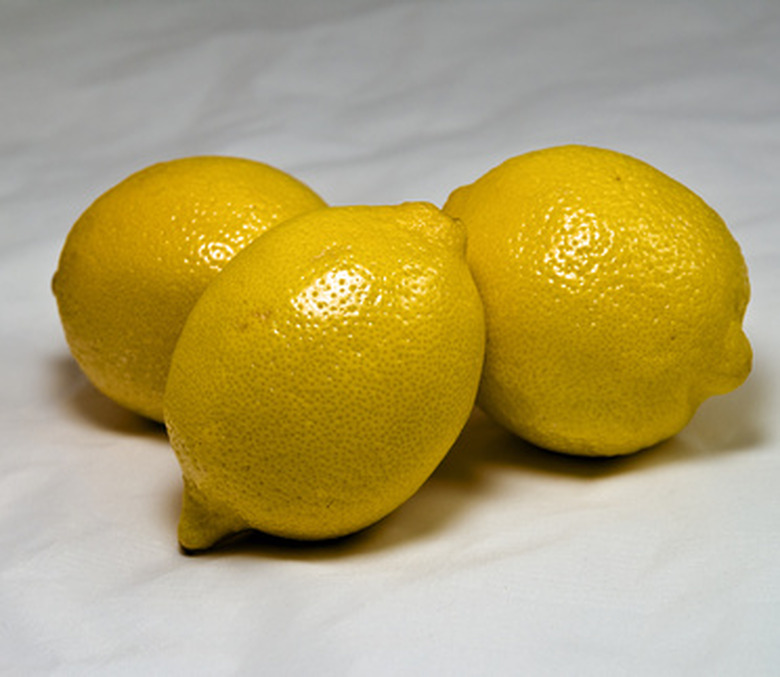What Are The Treatments For Lemon Tree Fungus?
You have nurtured your lemon tree, and of course you want it to stay healthy and productive. But several fungal diseases can afflict lemon trees. The good news is that Texas A&M University assures gardeners that few of the problems that affect lemon trees are life-threatening and you can ignore most of them because they cause only minor problems such as appearance or size of the fruit.
Keep the Area Clean
Greasy spot fungus causes oily looking, irregular spots on lemon leaves starting in summer and extending into winter. When your lemon tree's leaves begin to fall, Texas A&M University advises gardeners to keep them cleaned up from under the tree. It's best not to include them in your compost pile because the disease can spread. Instead, gather infected leaves in a garbage bag and dispose of it at your local landfill. A spray of liquid copper fungicide will treat greasy spot fungus; Planet Natural says it's convenient and will not burn plants. It is effective against many different plant diseases, but it can irritate the respiratory system or the skin, so always use it in a well-ventilated area and observe label precautions.
- You have nurtured your lemon tree, and of course you want it to stay healthy and productive.
- The good news is that Texas A&M University assures gardeners that few of the problems that affect lemon trees are life-threatening and you can ignore most of them because they cause only minor problems such as appearance or size of the fruit.
Melanose Fungus
This plant disease affects mainly grapefruit trees, but it can sometimes hit lemons. Tree Help says this fungal disease usually occurs on young, forming fruit on trees older than 10 years, causing a scabbed rind. It does not affect the quality of citrus fruit, but it's ugly. The fungus reproduces in dead wood, so always prune off any branches that appear dead immediately. A spray of liquid copper fungicide will treat melanose fungus.
Sooty Mold
This fungus causes lemon leaves to turn black. Whiteflies, aphids and mealybugs can all be culprits that introduce this fungus because their sweet, sticky excretion molds on lemon leaves, creating the black coating. Getting rid of ants will help the problem, because they bring these insects to your tree and "farm" them for the sweet excretion. You can use ant stakes around your lemon tree or smear a layer of a product called Tree Tanglefoot around the trunk. You can get rid of whiteflies, aphids and mealybugs by spraying your tree with insecticidal soap, which you can purchase at garden centers. Follow label instructions and be sure to repeat your application several times until you see no more insects. A spray of liquid copper fungicide will also treat sooty mold that occurred before you detected the insect problem.
- This plant disease affects mainly grapefruit trees, but it can sometimes hit lemons.
- The fungus reproduces in dead wood, so always prune off any branches that appear dead immediately.
Root Rot
Also called brown rot and collar rot, this fungus occurs when a phytophthora fungus is in your soil. Watch for dark brown patches that can ooze on the tree's bark. The bark will later dry out, crack and die, leaving a sunken canker. Fruit can also become brown and decayed and leaves will turn yellow and die back. If you suspect root rot, take all affected leaves and fruit from your tree. Keep the area around your tree clean of all fallen leaves and fruit. Prune branches that are less than 2 feet above ground level. It's important for lemon trees to have good soil drainage, so never overwater and consider transplanting it to a planter box or raised bed if it sits in a puddle for more than one or two days. You can use a fungicide product to control root rot: Tree Help recommends Agri-Fos and Captan.
- Also called brown rot and collar rot, this fungus occurs when a phytophthora fungus is in your soil.
